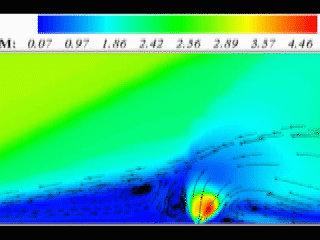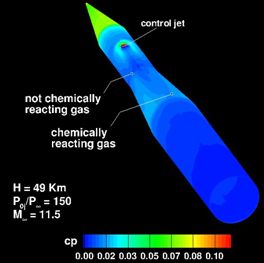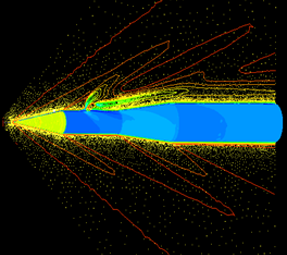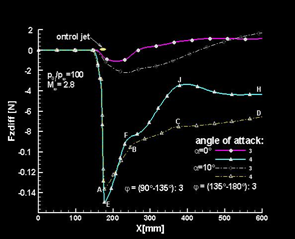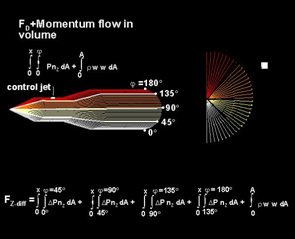
Reaction Control System Analysis for Missile and Re-entry Capsule (RCS)
Reaction Control System (RCS) analysis for missile and re-entry capsule
The “lateral side jet technology” is commonly used for flight control of satellites and re-entry vehicles.
Nowadays, it is applied to maneuver high-speed missiles flying in earth atmosphere.
The flow field in the vicinity of such a lateral jet blown out into a supersonic cross-flow is extremely complex and up to now it has been very difficult to accurately predict the aerodynamic interaction phenomena, especially the total forces resulting from jet thrust.
During the homing phase of an interceptor missile, a short response time for its control is mandatory.
The use of lateral jets for the missile control offers considerable advantages over conventional surface control methods, in particular as far as the agility and maneuverability of the vehicle are concerned.
The main reasons are shorter response times and the fact that the lateral jet control is effective even at a high altitude or low speeds at which dynamic pressures are low.
However, a transverse jet issuing from a missile body into a supersonic external flow creates a complex flow field that influences the control efficiency.
In case the jet thruster is switched on, the gases blow out of the thruster and cause an interference with the cross flow around the missile.
The complex flow field developed by the interaction of the laterally blowing gas jet with the supersonic cross-flow can be seen in the figures. The resulting jet plume is deflected and acts as a massive obstacle located on the surface of the missile.
In figures the force amplification factor K is depicted versus the flight Mach number and flight altitude. It is obviously shown that with increasing Mach number at high altitudes the factor K raise powerful and the side jet steering technology becomes essential in this flight domain where rudders and flaps lose more and more their effectiveness.
Gravity-Assist provides research services for problems involving RCS, aerothermodynamics and aerothermochemical analysis. SES Group's application engineers are highly experienced and skilled at applying CFD technology to a wide range of problems involving aerothermodynamics and aerothermochemistry predictions.
Computational Fluid Dynamics (CFD)
Computational fluid dynamics for aerothermodynamics and plasmas
Atmospheric entry Problem Analysis
Reaction Control System (RCS) Analysis for Missile and Re-entry Capsule
Modelling and Numerical Simulation of Multi-Physical Problems
